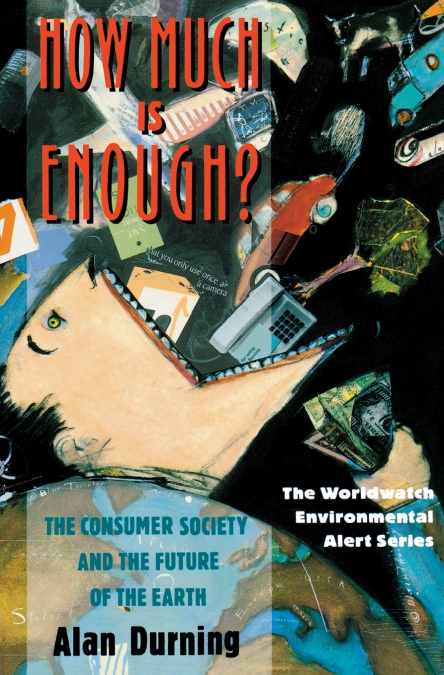
Alan Durning
Early in the age of affluence that began after World War II, retailing analyst Victor Lebow declared: "Our enormously productive economy... demands that we make consumption our way of life, that we convert the buying and use of goods into rituals, that we seek our spiritual satisfaction, our ego satisfaction, in consumption...We need things consumed, burned up, worn out, replaced, and discarded at an ever increasing rate." Americans have risen to Mr. Lebow's call, and much of the world has followed. The wildfire advance of the consumer lifestyle around the globe marks the most rapid and fundamental change in day-to-day existence the human species has ever experienced. Over a few short generations, we in the affluent fifth of humanity have become car drivers, television watchers, mall shoppers, and throwaway buyers. The tragic irony is that while the consumer society has been stunningly effective in harming the environment, it has failed to provide us with a sense of fulfillment. Consumerism has hoodwinked us into gorging on material things because we suffer from social, psychological, and spiritual hungers. Yet the opposite extreme--poverty--may be even worse for the human spirit and devastates the environment too, as hungry peasants put forests to the torch and steep slopes to the plow. If the Earth suffers when people have either too little or too much, the questions arise: How much is enough? What level of consumption can the planet support? When do more things cease to add appreciably to human life? These are the issues that Alan Thein Durning tackles in his eloquent and thought-provoking How Much Is Enough? The Consumer Society and the Future of the Earth. How Much Is Enough? is the second book in the Worldwatch Institute's new Environmental Alert Series. Ultimately, Durning argues, the linked fates of humanity and the natural realm depend on us, the consumers. We can curtail our use of ecologically destructive things and cultivate the deeper, nonmaterial